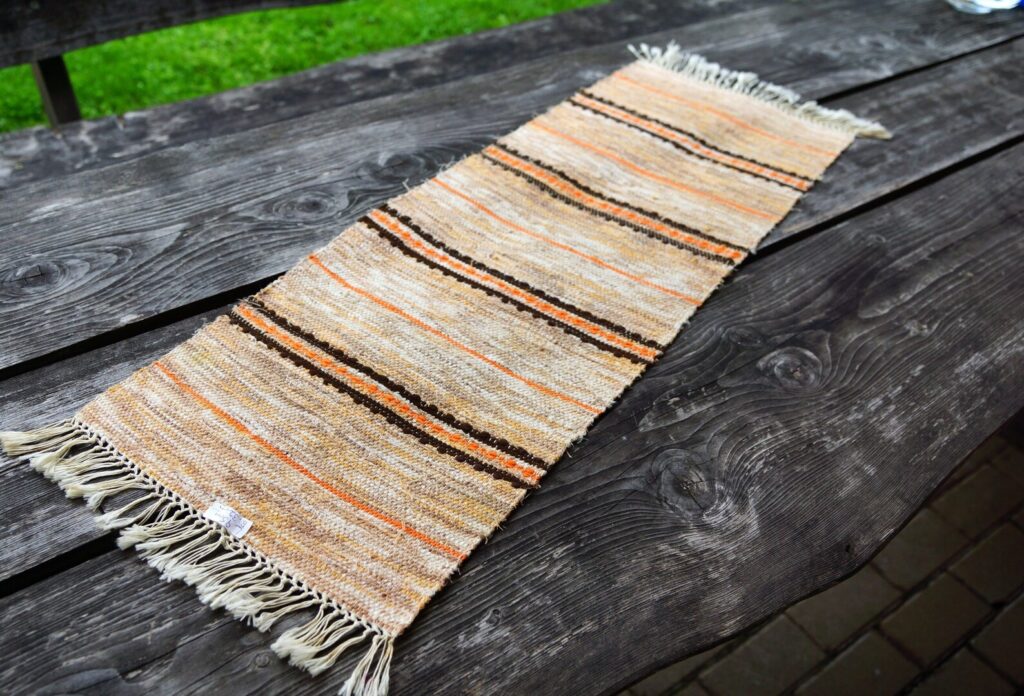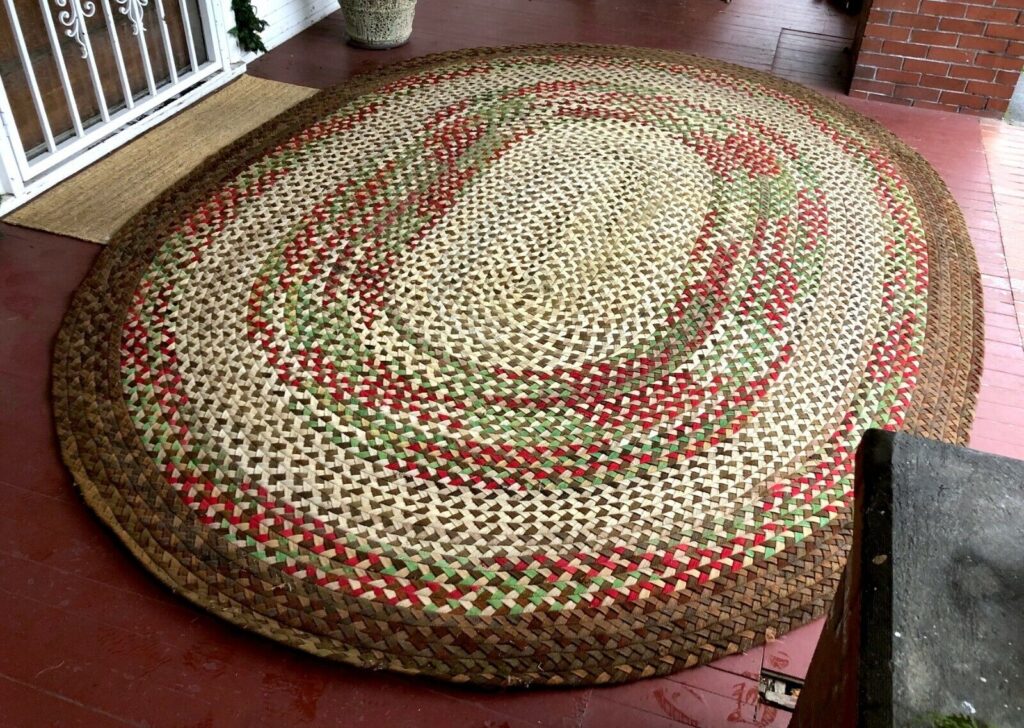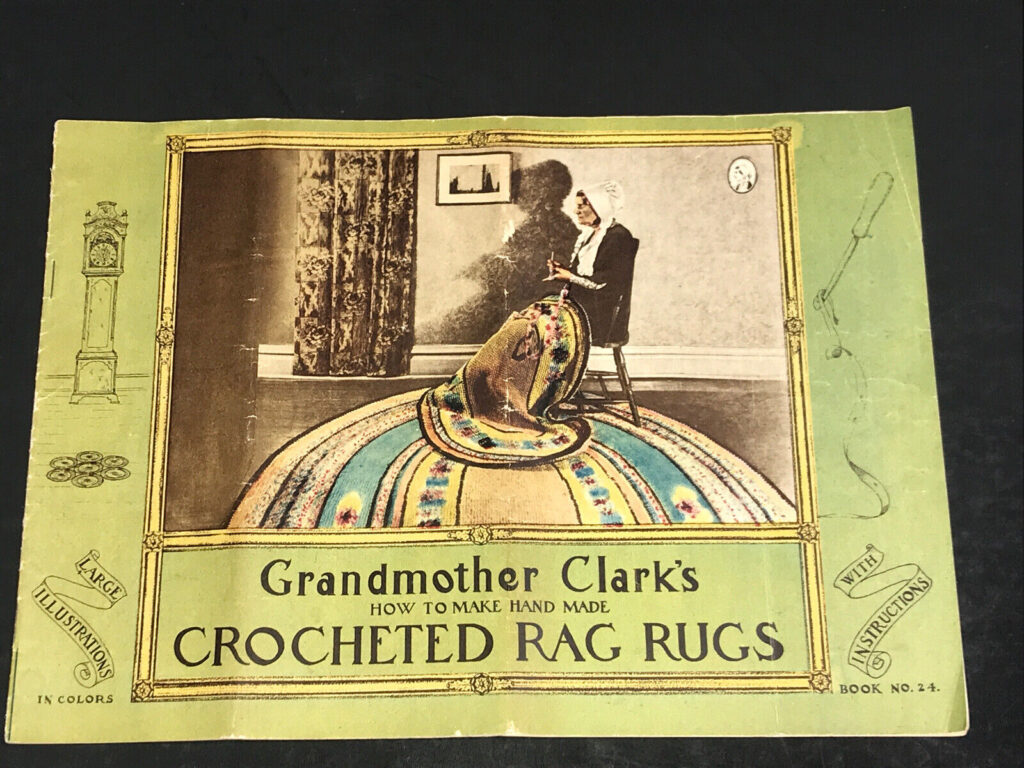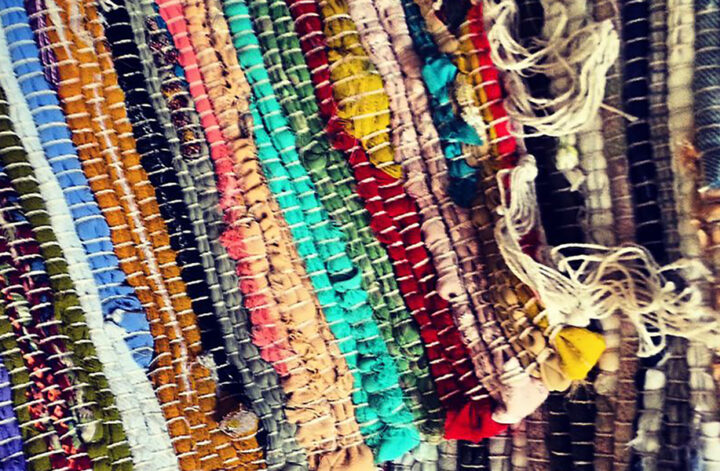The ultimate recycling project is a rag rug, made from scraps of old fabric that has been turned into strips to be woven or braided into a new and useful rug. While the history of rag rugs depends upon where you look, the documented history of rag rugs in the U.S. begins in the 1800s. Until the mid-1800s, rugs were a luxury item only found in the wealthiest of homes.
Most homes had no rugs until the mid-1800s when machine-made fabric became more commonplace and therefore more easily attainable. Once textiles became more available households were able to reuse fabric scraps in order to decorate their homes and help keep them warm. Throughout Europe and Asia, rag rugs were made from scraps of fabric as a way to warm the home and cover the wooden or dirt floor below. These scraps were woven on looms into rugs. A talented weaver could make rugs not only for their own home but for sale as well.

Braided rugs became popular in America around the same time serving the same purpose. Wool was a popular fabric as not only was it plentiful, but it was resilient as well. Wool repels water, holds warmth, and resists stains and bugs due to its lanolin content. Due to the fabric available at the time, many early American-made braided rugs feature colors such as blacks, browns, blues, and greens.

In India, braided rugs were made from silk or cotton from worn and discarded Saris. Known as Chindi rugs, they are still popular today. Indian-made Chindi rugs are often bright and colorful as the colors popular in India tend to be much brighter. Swedish rag rugs tend to come in light muted shades and are woven rather than braided. Before paper was made from wood pulp, Sweden actually created a tax incentive law to return used fabric scraps to the paper mills.
With the popularity of rag rugs came intricate designs and multiple patterns that could be both purchased from rug makers or created at home by talented weavers or braiders. As fabric became more readily available and prices came down, rugs also became larger. Room-sized rag rugs were a way to enhance a home before the invention of wall-to-wall carpeting in the 1930s.
With today’s focus on sustainability and the trends harking back to the last century rag rugs are popular once again. Vintage rag rugs can be found both online and at local brick-and-mortar shops as well as flea markets across the country. If you decide to opt for new, they can be found in most home decor shops both online and in stores, and if you decide to create your own from fabric scraps there are tutorials and patterns to be found as well. In fact, we have one of our own right here.







2 comments
I really enjoyed this post. We had rag rugs at home growing up in the 50s. The cloth were easier to wash. The braided rugs were not so easy. We bought an antique house in the 1980s and my mother in law braided us enough wool rugs to put all over the house. My friend makes shirren wool rugs out of old blankets and coats to sell for chairs, pet beds and hot pads for casseroles. It is a beautiful practice to reuse this material and to create both beautiful and useful items. Thank you.
I loved this post too, Pam. I’m the lucky owner of two braided wool rugs my Grandma Grace made in the 30s. The colors are as bright as the day she made them. When they need cleaning, we soak them with a garden hose and let them dry in the sun and they look as good as new. Practical and resilient, two additional descriptors for vintage rag rugs.